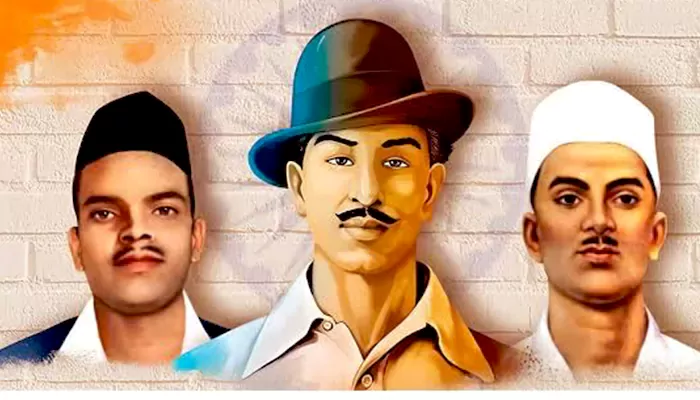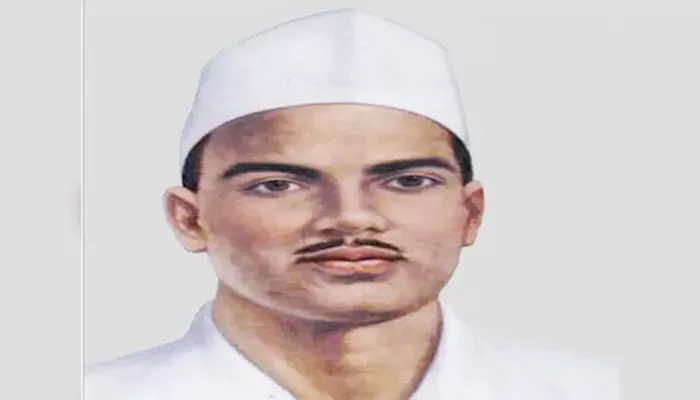
He fired the shot that shook an empire—yet history left him in Bhagat Singh’s shadow. It’s time to remember Rajguru as the rebel he truly was
Born in 1908 in the quiet village of Khed in Maharashtra—now renamed Rajgurunagar in his honour—Shivaram Hari Rajguru grew up in a land suffering under colonial rule. He was not yet ten years old when he saw the cruelty of the British firsthand, experiences that left a lasting impression on him and would later inspire a rebellion. Inspired by Lokmanya Tilak's fiery call for Swaraj, Rajguru was not one to be swayed by speeches or petitions—he chose the path of armed revolution.
In the shadows of Gandhi's non-violent movement, another form of resistance thrived: one that responded to brutality with courage. Rajguru joined the Hindustan Socialist Republican Association (HSRA), a secret revolutionary group that believed British colonial rule could not be negotiated with—it needed to be overthrown.
Together with Bhagat Singh and Sukhdev Thapar, Rajguru became part of a trio committed to action rather than words. Their goal was straightforward: to avenge the death of nationalist leader Lala Lajpat Rai, who died after injuries sustained during a police lathi charge at a protest against the Simon Commission in 1928.
On December 17, 1928, Rajguru, a talented marksman, positioned himself alongside Bhagat Singh outside Lahore Police Headquarters. Their original target, Police Superintendent James Scott—who had ordered the attack on Lajpat Rai—was absent. Instead, Assistant Superintendent J.P. Saunders was present. Without delay, the revolutionaries opened fire, sending a clear message: the blood of Indian patriots would not go unavenged.
What ensued was a manhunt. Rajguru went into hiding, even finding refuge with an RSS worker in Nagpur, and briefly meeting Dr. K.B. Hedgewar, the founder of the RSS. As the authorities closed in, he was finally captured in Pune. Bhagat Singh surrendered after throwing bombs into the Central Legislative Assembly—not to kill but to 'make the deaf hear."

(Credit: Jammu Kashmir Now)
At just 22 years old, Rajguru was sentenced to death. On March 23 1931, he was hanged alongside Bhagat Singh and Sukhdev at Lahore Central Jail. The British carried out the execution secretly at night, fearing public unrest. The trio's bodies were hastily cremated along the banks of the Sutlej River.
But martyrdom only deepened their legacy.
Despite his sacrifice, Rajguru's name is often mentioned as a footnote to Bhagat Singh's legend. It was Bhagat's eloquence, his writings, or his defiant image that captured the nation's imagination. Rajguru, who was more reserved and action-focused, left fewer words behind, but no less conviction.
His story and legacy are honoured through local tributes such as his ancestral home, Rajguru Wada, the annual Shaheed Diwas on March 23, and the respectful way his memory is maintained in Maharashtra. However, on the national stage, he merits more than just ceremonial remembrance.

(Credit: Times Now )
Rajguru did not die to be remembered as a martyr. He lived to demonstrate that colonial injustice could not silence Indian resistance. His goal was not fame, but freedom. In this pursuit, he stood shoulder to shoulder with giants.
In our textbooks and memorials, we owe him more than a passing mention. We owe him a place in the nation's collective conscience.
Let us remember Rajguru not as Bhagat Singh's accomplice, but as India's young lion, who aimed his rifle not just at an officer, but at an empire.